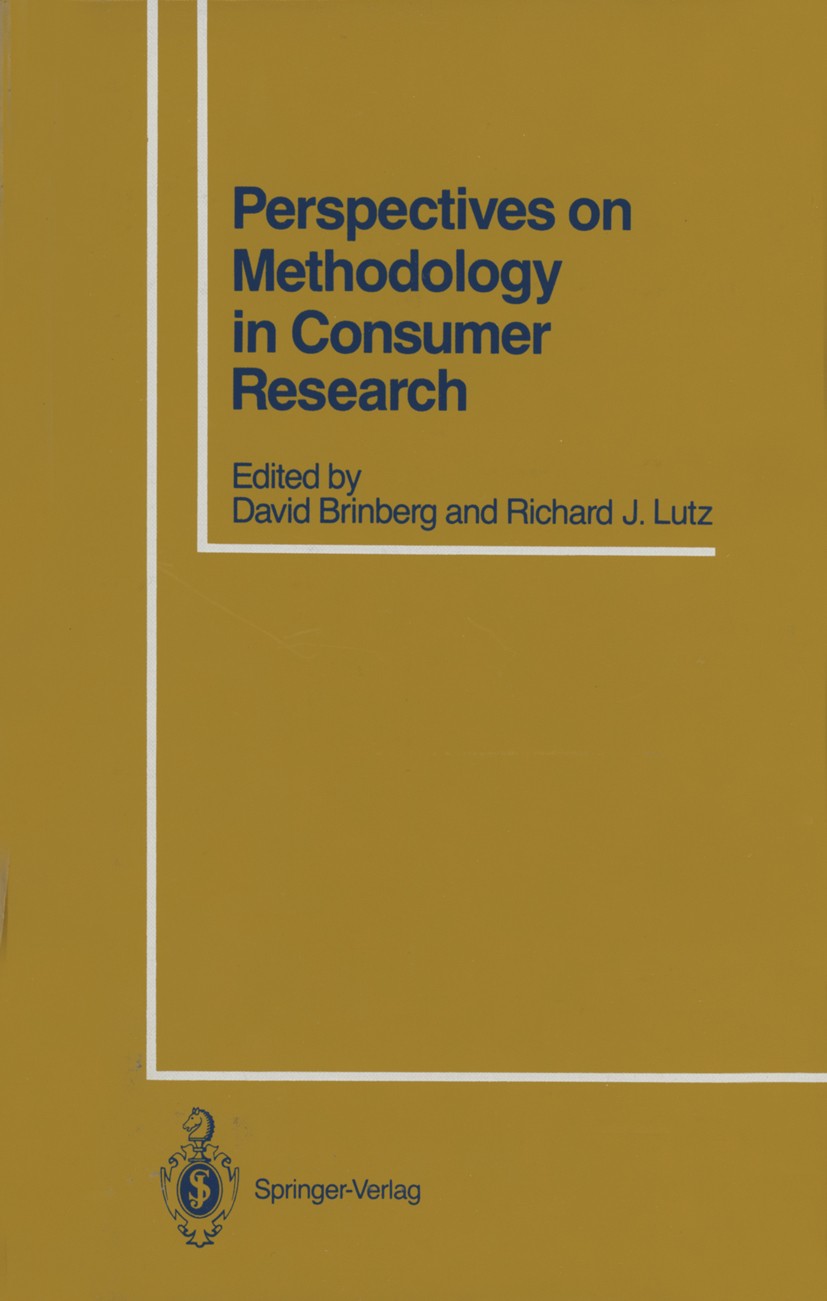| 书目名称 | Perspectives on Methodology in Consumer Research | | 编辑 | David Brinberg,Richard J. Lutz | | 视频video | http://file.papertrans.cn/745/744886/744886.mp4 | | 图书封面 |  | | 描述 | Methodological advances in consumer behavior are increasing rapidly. We can characterize these advances by work in two logically separate but functionally related areas: (a) the philosophical underpinnings of our methods, and (b) the analytic strategies for examining the phenomena of interest in the field. An important aspect in communicating these advances is the demonstration of their use on focal problems in consumer behavior. Current research strategies and analytic techniques in the field of consumer research reflect the dominant logical empiricist epistemology. The develop ment of new epistemologies (e.g., scientific relativism, hypothetical realism), however, is likely to modify the dominant logical empiricist approach and is also likely to influence the analytic strategies used to conduct research. For instance, with the increased awareness of scientific relativism and hypothet ical realism, greater emphasis is anticipated for idiographic rather than nomo thetic designs, for observational rather than experimental designs, for process rather than static analyses, and for more sophisticated techniques for summariz ing findings across studies. The major theme underlying th | | 出版日期 | Book 1986 | | 关键词 | Evaluation; awareness; coding; cognition; interaction; marketing; physics; psychology | | 版次 | 1 | | doi | https://doi.org/10.1007/978-1-4613-8609-4 | | isbn_softcover | 978-1-4613-8611-7 | | isbn_ebook | 978-1-4613-8609-4 | | copyright | Springer-Verlag New York Inc. 1986 |
The information of publication is updating

|
|
 |Archiver|手机版|小黑屋|
派博传思国际
( 京公网安备110108008328)
GMT+8, 2025-11-22 11:17
|Archiver|手机版|小黑屋|
派博传思国际
( 京公网安备110108008328)
GMT+8, 2025-11-22 11:17


